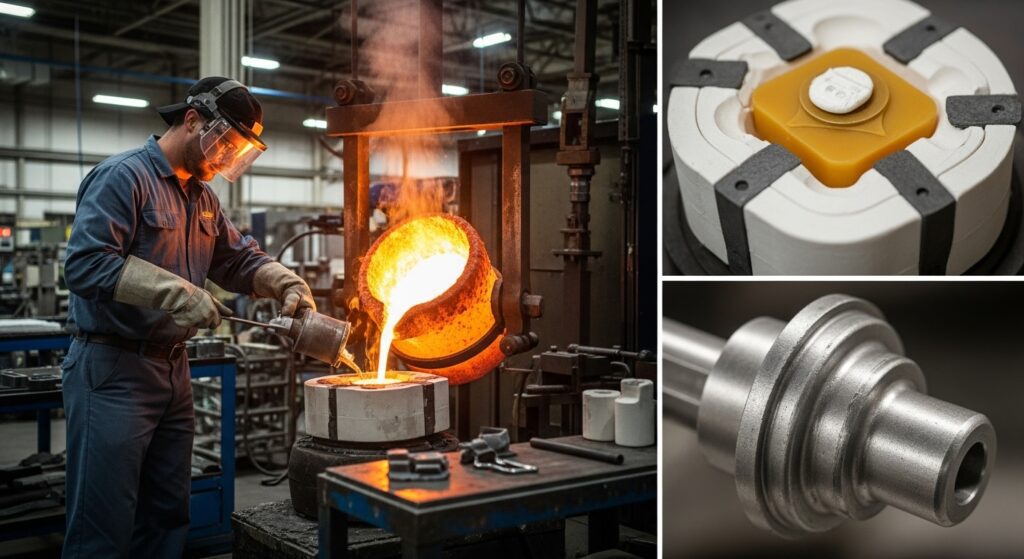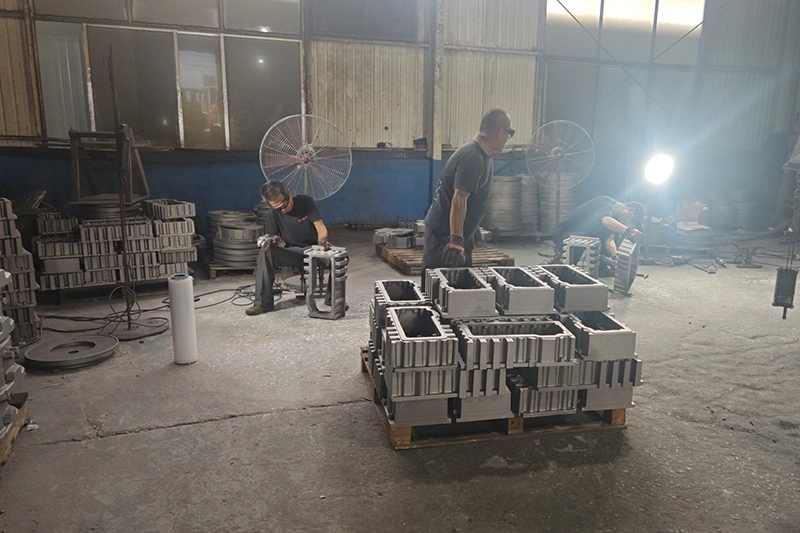A wax pattern in investment casting is a duplicate of the final metal part made from wax. This pattern is created using a die and serves as a model around which a ceramic shell is formed. Once the shell hardens, the wax is melted out, leaving a mold for molten metal.

The process begins with creating a master pattern, which is the original model of the part. Engineers typically craft this master from materials like aluminum, steel, or even plastic using CNC machining or 3D printing. The master pattern includes all the fine details, surface textures, and dimensional specifications of the final casting.
From this master pattern, toolmakers create the production tooling – usually aluminum or steel dies. These dies consist of 2 or more pieces that fit together to form a cavity matching the part geometry.
Once the die is prepared and mounted in a wax injection press, molten wax, maintained at a precisely controlled temperature, is injected under high pressure into the die cavity. The die is typically temperature-controlled to ensure consistent solidification rates and pattern quality. After injection, the wax is allowed to cool and solidify within the die, perfectly replicating the intricate details of the cavity.
Once the wax has completely solidified within the die, the die is opened, and the wax pattern is carefully ejected or removed. For complex dies, this may involve the disassembly of “collapsible” tooling components designed to release the pattern without damage.
After removal, the patterns are typically inspected for any imperfections. Common minor defects include flash (a thin film of wax that may have seeped into the parting lines of the die) or seams. These are usually removed manually using trimming tools or by semi-automated finishing processes.
To maximize the efficiency of the investment casting process, especially for smaller components, multiple individual wax patterns are typically assembled onto a common wax gating system.
This assembly, often resembling the branches of a tree, is commonly referred to as a “wax tree,” “cluster,” or “pattern assembly.”
Unfilled pattern waxes, also known as neat or straight waxes, are formulations primarily composed of wax materials without significant quantities of functional additives or fillers.
They generally provide patterns with a very good surface finish. Due to the absence of fillers, unfilled waxes are often easier to reclaim and recycle.
Filled pattern waxes incorporate various additives or fillers into the base wax formulation to enhance specific properties. These fillers can include finely ground ceramic powders, polymeric materials (such as bisphenol-A, or BPA), inert minerals like calcium carbonate, or other specialized additives.
The primary purposes of these fillers are to increase the mechanical strength, stiffness, and hardness of the wax pattern, improve its dimensional stability by reducing thermal expansion and contraction, and minimize overall solidification shrinkage.
Soluble waxes are specialized formulations designed for the creation of intricate internal cavities and passages within a wax pattern, which subsequently form hollow sections in the final metal casting.
These are often based on materials like polyethylene glycols (PEGs) or other compounds that can be selectively dissolved without affecting the primary pattern wax.
Runner waxes, also known as gating waxes, are specifically formulated for creating the sprue, runners, and gating system of the wax tree assembly.
The key requirements for these waxes are excellent fluidity (low viscosity) when molten, to ensure that the entire gating system fills completely and efficiently, and a relatively low melting point.
Sticky waxes are characterized by their tacky or adhesive nature at room temperature or upon slight warming. They are primarily used for the assembly of individual wax patterns onto the runner system to form the wax tree, or for minor repairs to damaged patterns.

